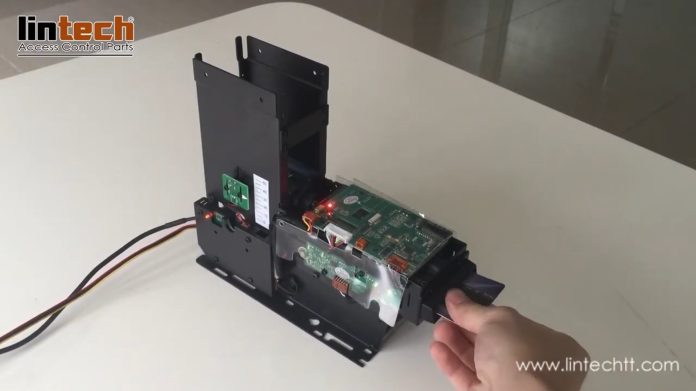In our increasingly digital age, the Internet of Things (IoT) stands at the forefront of technological progress. It serves an important role in the network of devices and systems, fostering a new level of interaction and data sharing. This evolution is reshaping our daily interactions with technology, marking a significant shift in how we engage with and experience the digital world.
At the forefront of this revolution are devices like Lintechtt’s F3 self-service card dispenser, which embodies the seamless integration of advanced mechanics and digital connectivity. These dispensers, equipped with the capability to read and write RFID and IC cards, represent a leap in access control technology.
Their integration into the IoT framework opens up a myriad of possibilities for smarter, more efficient operations across various sectors. So, let’s discuss how we can create our high-tech stark tower!
Enhancing Security with IoT-Enabled Access Control
Integrating Lintechtt’s F3 card dispensers into IoT-based security systems marks a significant leap in access control. This integration brings a new level of sophistication, allowing for real-time data communication and remote management.
Integrating IoT with card dispensers elevates their capabilities, allowing for advanced features like real-time monitoring of the dispensers’ status, automatic maintenance notifications, and the ability to update access permissions dynamically.
This not only makes security operations more efficient but also creates a security system that is both flexible and responsive, key qualities in our rapidly evolving world. Essentially, this integration melds robust physical security with the smart, adaptable nature of IoT technology.
Smart Parking Solutions Using Card Dispensers
Integrating Lintechtt’s F3 card dispensers into IoT-enabled parking systems presents a smart solution for modern urban challenges. This integration paves the way for automated entry and exit, streamlining the entire parking experience.
As vehicles arrive, the IoT system can communicate with the dispenser to issue access cards, facilitating smooth and quick access. Additionally, integrating payment processing can further expedite the parking experience, allowing for contactless and efficient transactions.
This seamless blend of the F3 dispenser with IoT technology not only enhances the efficiency of parking lot operations but also offers a more user-friendly and time-saving solution for drivers.
IoT in Hospitality
In the hospitality industry, the fusion of Lintechtt’s F3 card dispensers with IoT-enabled hotel systems can transform guest experiences. Hotels implementing this technology enable swift and streamlined check-ins.
The F3 system, integrated with hotel reservation and management platforms, allows guests to quickly obtain their room keys. This not only accelerates the check-in process but also bolsters security and adds a personal touch to guest services. Adopting such advanced solutions is a forward-thinking move, enhancing hospitality operations to be more efficient, secure, and focused on customer satisfaction.
Advanced Retail Solutions
In the dynamic world of retail, integrating Lintechtt’s F3 card dispensers with IoT networks can revolutionize customer engagement.
Imagine loyalty card dispensing systems that not only issue cards but also connect in real-time to customer databases, offering personalized deals and collecting valuable shopping data. Similarly, for payment processing, these dispensers could streamline transactions while gathering insights into consumer habits.
This IoT-enabled approach not only enhances the customer experience but also provides retailers with a goldmine of data for targeted marketing and improved service delivery. The future of retail could be reshaped by such smart, interconnected systems.
Conclusion
In essence, the integration of card dispensers like Lintechtt’s F3 with IoT presents vast potential across multiple industries. This synergy offers a leap in operational efficiency, streamlining processes from parking management to hotel check-ins.
The security enhancement is notable, with IoT connectivity enabling real-time monitoring and data analysis. Moreover, this integration significantly uplifts the user experience by offering seamless, automated interactions.
Such advancements are not just a step forward; they’re a stride towards a more connected, efficient, and secure future in various sectors.










